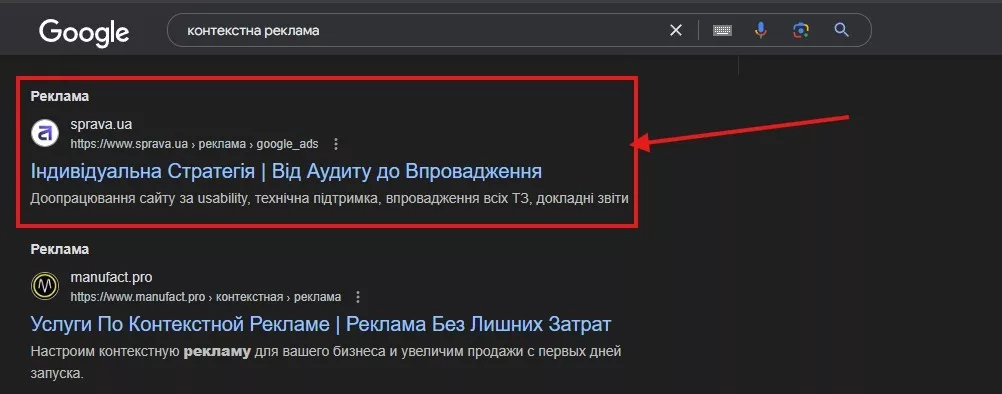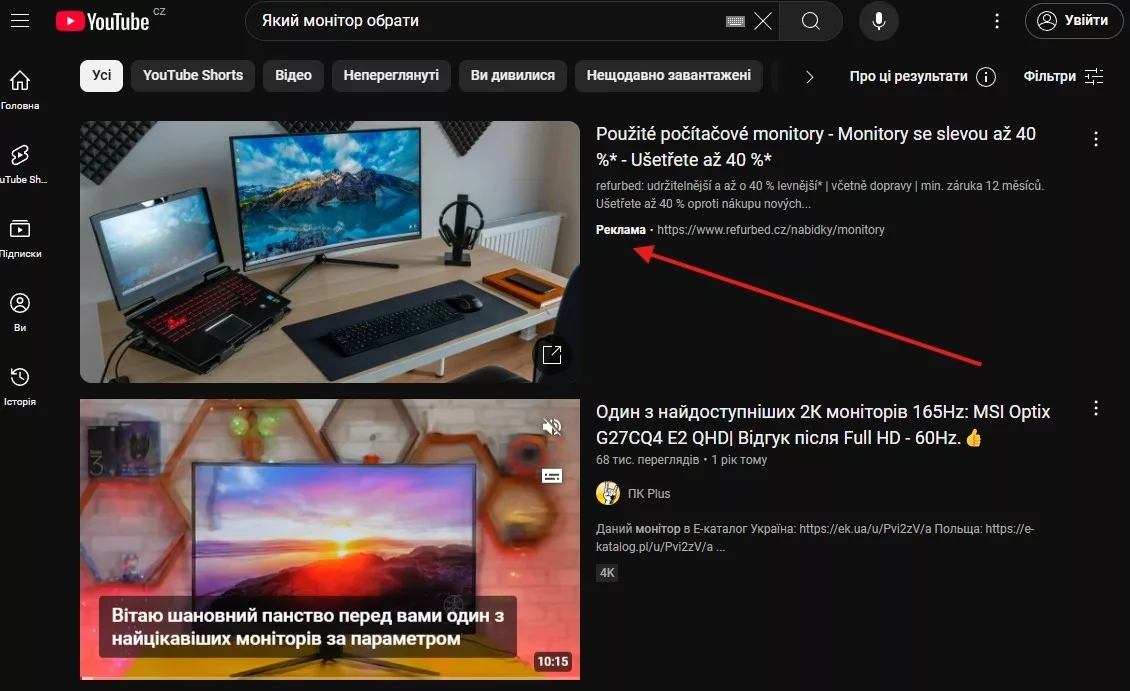Greetings, dear community! Contextual advertising is one of the key traffic sources actively used by modern affiliates. Even though this traffic source is far from cheap, the high conversion rate justifies the cost. If your ad campaign is set up correctly, you can be sure to receive an insane number of conversions!
Today, we’ll take a closer look at contextual advertising — how it works, its features, and the types available. But before we dive in, a quick reminder: we’ve already explained the differences between push and native ads. Worth checking out!
What is contextual advertising?
Contextual advertising is a format that allows you to reach a highly interested audience. Here’s how it works: a person types a specific query into a search engine, like “buy a laptop,” and among the search results, they’ll also see your ad.
Sometimes people confuse contextual ads with targeted ads. But there’s a key difference: targeted ads focus on an audience that may be interested in an offer but isn’t necessarily ready to act. Contextual ads, on the other hand, are aimed at a “hot” audience — users actively searching for something specific.
It’s hard to argue that Google Ads is the biggest contextual advertising network today. And for good reason — Google leads the way in many areas:
- Reach
- Variety of ad formats
- Fair pricing based on an auction system
In Google Ads, the most common contextual ad format is the one that blends into the search results — it looks native and encourages clicks.

However, to make sure your ad hits the target, you’ll need to put in some work — especially when it comes to choosing keywords. Keywords are the backbone of contextual ads. The ones you choose will determine your campaign’s reach and cost. For example, bidding on “blender” will cost more than something specific like “buy white blender for mom.”
The ad format you choose will also affect campaign performance — so let’s break those down next.
Types of contextual advertising
The beauty of contextual advertising is that it functions like a mechanism — users see the exact ad that matches their search intent. And that mechanism can come in many shapes and sizes.
Search engine ads
The most common type is search engine listings. There are two main formats:
- Search ads — ads that appear among organic results and are marked with a “Sponsored” or “Ad” label;
- Product listings — not typically used in affiliate marketing, but good for e-commerce businesses with online stores.
But contextual ads aren’t limited to search results alone.
Google Display Network (GDN)
Outside of search, contextual ads can run across Google’s massive Display Network — a vast collection of partner websites. Ads here come in several formats:
- Search-style placements — these mimic traditional search ads but appear in dedicated ad blocks on partner sites. They’re triggered by on-site searches;
- Banners — graphical creatives displayed in designated ad blocks across partner websites.
The GDN spans countless sites and services, but the exact list is undisclosed — Google doesn’t publicly share the full inventory.
Ads within Google services
Google also offers premium ad placements across its own services, like YouTube and even Gmail.

YouTube is particularly interesting because it allows you to run video creatives. Your ads can appear during video playback or in search results based on matching keywords.

Your video might also appear in YouTube’s recommendation feed — a great way to boost reach.
In-App ads
Google partners with mobile app developers, letting advertisers run ads inside apps. This includes not only Google UAC, but also regular contextual ads. These might appear in app settings or between rewarded video breaks.
Contextual in-app ads are especially useful when promoting gambling offers through apps. In these cases, you funnel traffic from one app to another — which is often more effective than traditional funnels.
Pros and cons of contextual advertising
Even beginner affiliates know that contextual advertising is one of the most expensive traffic sources. Most contextual ads come directly from brands — they’re more focused on solving internal business goals than outsourcing sales to affiliates.
But the tool is available — so why not use it? With the right offer (and a good payout per lead), you can easily turn a profit. You just need a clear plan in place.
Here are some key advantages of contextual advertising:
- You reach the most interested users. People see your ad exactly when they’re searching for what you offer;
- Huge reach. Google provides thousands (if not millions) of ad placements through a single platform;
- Flexible campaign settings and powerful analytics tools help you optimize performance and squeeze value from every penny;
- Instant results — traffic starts flowing immediately after your campaign launches.
But no ad format is perfect. Contextual ads have their downsides — and in some cases, those may be deal-breakers:
- High cost. Small budgets may not be enough to make contextual campaigns viable;
- Restrictions. Many verticals are off-limits, creating headaches for affiliates;
- Ongoing work is required — you’ll need to constantly refine your keyword list and optimize your campaigns to ensure profitability;
- Complex setup. Despite Google’s efforts to simplify the UI, some settings can be overwhelming for newcomers.
So should you run this kind of traffic? That’s entirely up to you.
Best verticals for contextual advertising
Contextual advertising isn’t suitable for every vertical. For example, driving expensive traffic to sweepstakes isn’t usually a great idea. So what should you focus on? These verticals pair especially well with contextual traffic:
- Essay offers — by the time you read this, we should already have a full breakdown on the essay + contextual combo;
- Finance — this vertical thrives on themed traffic with high intent, which contextual ads deliver. Just be careful with compliance rules, which can be strict in this niche;
- E-commerce — again, it depends on the offer, but contextual ads can work very well here, especially if you use tools like Google’s product showcase.
In general, contextual ads are great for any “white hat” vertical. Just be sure to run the numbers and make sure your ad spend will be justified by the expected conversion rate. Predictive analytics is key to creating profitable campaigns.
Conclusion
Contextual advertising isn’t the most popular traffic source among affiliates — mostly due to its cost. But in the right campaigns, that cost can be offset by strong profits — especially if you pick a high-paying offer, optimize your campaigns, select effective keywords, and use the right formats. And as you can see — there are plenty of those to choose from.
Have you ever run traffic through contextual ads? Share your experience in our Telegram community, where we always discuss the hottest topics in affiliate marketing!
With respect, your Geek!
What is contextual advertising? — FAQs
Contextual ads work like this: a person types a query into a search engine — like “buy a laptop” — and your ad appears alongside the search results.
People often confuse the two. Targeted ads reach an audience that may be interested but isn’t actively searching. Contextual ads are shown to users who are already searching — a much “hotter” audience.
